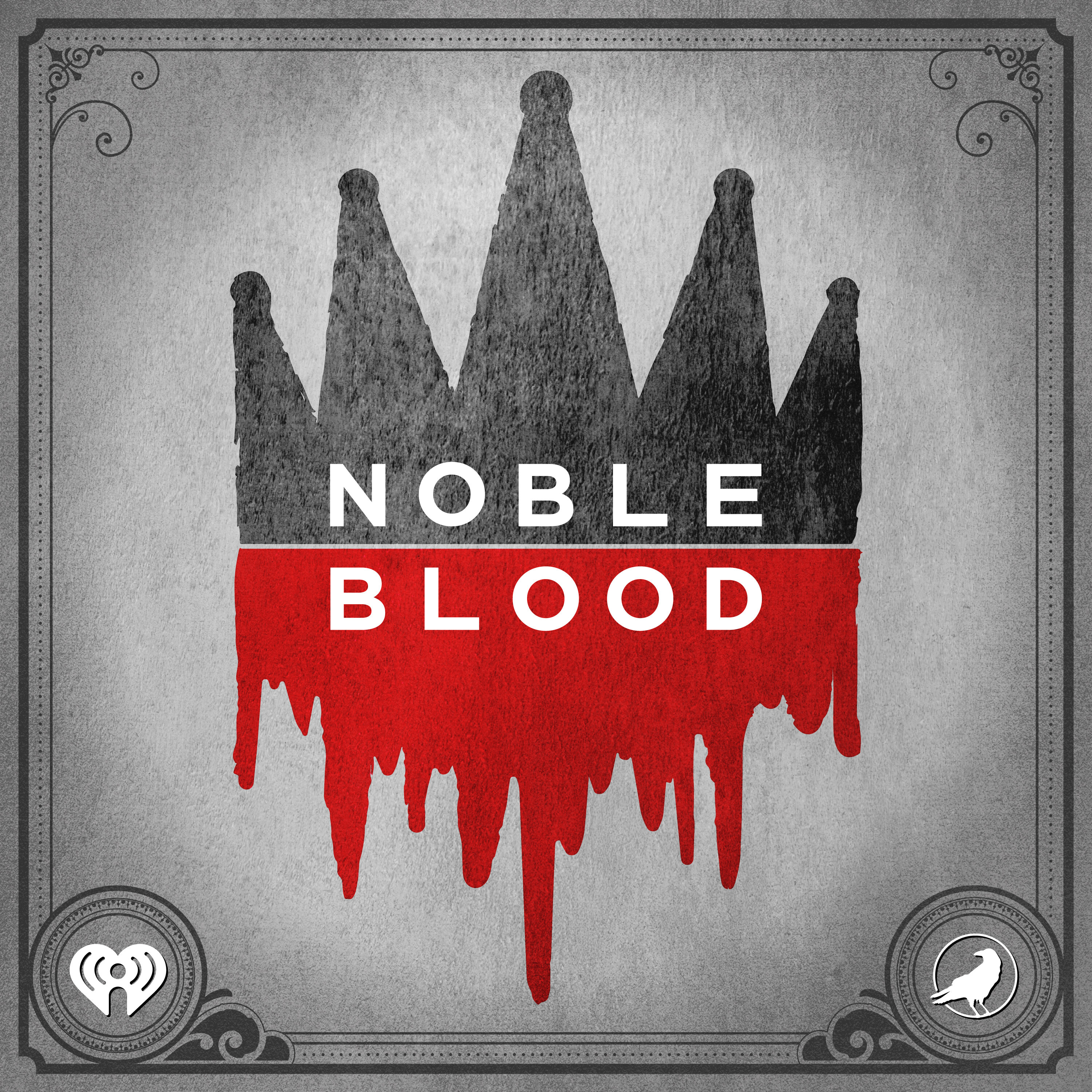
Door Key
I find myself drawn to the more social side of history than dates or battles. While I do think dates and battles are important, I find questions like ‘When did Catherine of Aragon realize she'd lost Henry VIII’s love to Anne Boleyn?’ or ‘Just what exactly was Aaron Burr's deal?’ to be what really fascinates me about history. This is the lens that I view history from on the Door Key Podcast (and the accompanying Substack newsletter) because I'm a dork with a deep love of history who wants to talk about it.
https://doorkey.substack.com/
Door Key
Zheng Yi Sao, The Pirate Queen
I would love to hear from you - click here to send Door Key a written message!
Door Key is talking about Zheng Yi Sao, the Pirate Queen this episode!
Zheng Yi Sao lived in China during the late 1700s and early 1800s, and from humble beginnings ended up becoming not only history's most successful female pirate, but one of the most successful pirates in history, period. Zheng Yi Sao is the epitome of the phrase ‘Well-behaved women seldom make history’, and her story is fascinating!
☕️ Production & marketing assistance: Coffeelike Media,
https://www.coffeelikemedia.com/
The picture I used for the episode: 'A fanciful depiction from History of Pirates of all Nations published in 1836' - Public Domain.
Subscribe to the Door Key Substack newsletter FREE and paid options:
https://doorkey.substack.com/
Follow Door Key on Social Media:
- Facebook: https://www.facebook.com/groups/1040108179952433
- Instagram: https://instagram.com/doorkeypod
- Threads: @doorkeypod
- LinkedIn: http://www.linkedin.com/in/doorkeypod
- Email: doorkeypod@gmail.com
Support Door Key:
- Become a paid subscriber on the Door Key Substack newsletter: https://doorkey.substack.com/
- Buy me a cup of coffee: https://www.buymeacoffee.com/doorkeypod
- Make a donation via PayPal: https://paypal.me/Doorkeypod?country.x=US&locale.x=en_US
- use our Buzzsprout affiliate link to host your podcast on this platform
Zheng Yi Sao, the pirate queen
Hello everyone! I’m going to start this episode out with a huge disclaimer. I’m going to be talking about some history in the late 1700s and early 1800s China. This is a great story, I mean, I’m going to be talking about pirates! But I’m going to be saying a lot of Chinese words that I promise I’m going to do my best to pronounce correctly, but will inevitably fail. Please know that any mispronunciation is not due to lack of effort or care. Having said all that, I’m going to start the episode.
Shi Yang was born in 1775 in Guangdong, which is a coastal province of Southeast China. She’s also known by other names, but she’s most commonly known by her married name, which is Zheng Yi So. Zheng Yi So translates to ‘wife of Zheng Yi’, so for clarity’s sake, that’s how I’ll be referring to her throughout this episode, Zheng Yi So.
It's thought that Zheng Yi So was a Tanka. The Tanka, also known as boat people, are an ethnic group in Southern China who traditionally lived on boats in coastal parts of China. Many now live onshore, but some still live on their boats and earn their living fishing. Historically, the Tankas were considered outcasts. It’s thought that Zheng Yi Sao was a sex worker on one of the boats, on what my sources refer to as a ‘floating brothel’, but this is unconfirmed. In 1801, Zheng Yi Sao married Zheng Yi, who was a well-known pirate.
This is Zheng Yi Sao’s story, but I need to discuss her husband Zheng Yi first for just a moment.
Zheng Yi was a pirate who fought as a privateer for the Vietnamese Tây Sơn dynasty. Back in this time, England or Spain for example, would hire people to unofficially raid a rival country’s ships. These raiders, who were on the government payroll were known as privateers. This seems to be the same situation with Zheng Yi, where he worked on behalf of the Vietnamese government. Zheng Yi was involved in the Tây Sơn wars, and later served under the first emperor of the Nguyễn dynasty of Vietnam. Under the patronage of Tây Sơn, Zheng Yi fought in his cousin Zheng Qi's fleet. But it seems like Zheng Yi made that transition from a privateer who worked for the Vietnamese government to pirate to worked for himself, because all of my sources just stop referring to him as a privateer and start referring to him as a pirate, so … that’s what I’m going with.
Zheng Yi came from a family of well-known pirates. He had an adopted son named Zhang Bao. Zheng Yi had abducted Zhang Bao in 1798 when Zhang Bao was 15 and pressed Zhang Bao into piracy.
Zheng Yi was good at his job as a pirate. He was able to form an alliance of Cantonese pirate fleets that were normally competitors. Each pirate leader of each fleet agreed to ban together for the greater good. This confederation consisted of six fleets known by the color of their flags – red, black, blue, white, yellow, and purple. Zheng Yi commanded the biggest fleet in the confederation, the Red Flag Fleet. By 1804, this coalition was a strong force, and one of the most powerful pirate fleets in all of China.
Zheng Yi would suddenly die in Vietnam in November of 1807. His cause of death isn’t certain, but sources seem to indicate that he died in a typhoon, falling overboard in an accident.
After the death of Zheng Yi, Zheng Yi Sao partnered with her step-son Zhang Bao, and took control of her deceased husband’s pirate confederation. The Red Flag Fleet was huge. It composed of 400 ships, and had between 40,000 and 60,000 pirates. Zheng Yi Sao’s ships battled several major powers, including the East India Company, the Portuguese Empire, and the Great Qing.
Zheng Yi Sao effectively inherited her deceased husband's informal command over the entire Pirate Confederation, while her step-son Zhang Bao became the official commander of the Red Flag Fleet. According to a report by a government official later in 1810, ‘Zhang Bao obeyed Zheng Yi Sao's orders, and consulted her on all things before acting.’ This is where I should probably mention that that that Zheng Yi Sao and Zhang Bao ended up being involved in a romantic relationship.
In 1808, about a year after Zheng Yi Sao took over control of the Pirate Confederation, it became much more active. A battle ensued, where Zhang Bao destroyed a fleet of 35 ships. Then Zhang Bao won another battle a month later. These two battles reduced the Chinese provincial fleet by half, and cleared the way for the pirates to enter the Pearl River.
1809 was also an eventful year for the Pirate Confederation. The Provincial Commander, who had about 100 ships under his command, engaged a small group of pirates near Dawanshan Island. Those pirates asked Zheng Yi Sao for help. She took command of the Red Flag Fleet and the White Flag Fleet and ordered Zhang Bao to engage from the front with around 10 ships. Zhang Bao's lieutenants were to outflank the Provincial Commander’s ships from the sides, and the leader of the White Flag Fleet was to cut the Commander’s ships off from the rear. In the end, Zheng Yi Sao won this battle.
But a few months after that, the Qing navy dealt a major blow to the Pirate Confederation. The White Flag Fleet was destroyed, and its leader was killed.
However, the destruction of the White Flag Fleet didn’t get Zheng Yi Sao down. She ordered a massive raid: Zhang Bao would raid with the Red Flag Fleet, another member of the Confederation would raid with the Black Flag Fleet, and Zheng Yi Sao would lead this raid with her personal fleet. The Black Flag Fleet worked its way through the waterways along the Pearl River for six weeks. This was an extremely bloody raiding campaign, which ultimately caused the deaths of about 10,000 people. Which … woah! Then, Zhang Bao’s Red Fleet destroyed a town, killing 2,000 people. Numerous villages, settlements, and towns fell victim to these pirates.
Then, Zheng Yi Sao personally took command of 500 ships and anchored near the town of Tanzhou. She then ordered Zhang Bao to raid a town that was a bit further upriver. Zhang Bao captured around 400 civilians.
Then Zheng Yi Sao ordered The Black Flag Fleet to anchor. The Black Flag Fleet raided two days later.
By this point, the Provincial Fleet was back to strength and ready for action, but was defeated again by Zhang Bao.
Chinese officials were fed up by this point, and looked to other countries, hoping to get help against Zheng Yi Sao and her Pirate Confederation.
The Portuguese Empire, which controlled an area of China at this time, agreed to help, as Zheng Yi Sao had recently captured the ship of a Portuguese governor, and so the Portuguese were eager for revenge.
Then, Zheng Yi Sao left the Pearl River with only a few ships, and anchored at Tung Chung Bay for repairs. The Portuguese sent three ships and a brig after Zheng Yi Sao. She immediately called the Red Flag Fleet under Zhang Bao for help. Zhang Bao arrived at the Bay but the Portuguese were no longer there. So he decided to anchor his ships for repair and maintenance.
Then, six Portuguese ships blockaded Zheng Yi Sao and Zhang Bao within Tung Chung Bay. Then, 93 ships from the provincial fleet joined the Portuguese in their blockade.
The pirates tried to counterattack and break the blockade, but were unsuccessful. They did manage to capture one ship from the provincial fleet, and killed all of the 74 men aboard.
However, this situation turned into a stalemate between the pirates and the joint Chinese-Portuguese fleet. Frustrated with this lack of progress, the leader of the Provencial Fleet, the Viceroy of Liangguang named Bai Ling set 43 of his ships on fire, and sent them towards the pirates in Tung Chung Bay. This strategy was not effective. The pirates just towed the ships that were on fire ashore, put the fires out, broke the ships up, and used them for firewood.
Then the wind changed, setting two of their own ships on fire. Zhang Bao and Zheng Yi Sao took advantage of this wind, and broke through the blockade, and escaped into the South China Sea. The provincial fleet ended up losing 3 ships and at least 74 men, while the pirates lost 40 men and no ships.
The British then officially joined in on the fight. The British ship Mercury joined 60 provincial warships in patrolling the inner passage of the Pearl River. Then the Portuguese signed an agreement that called for six Portuguese ships to join the Chinese provincial fleet on patrol for six months.
These embargoes were starting to work by cutting off the pirates' supply lines. These supply lines being cut off, as well as the limits of the Pirate Confederation organization itself, caused Zheng Yi Sao to start to consider surrendering to the authorities.
The Portuguese magistrate acted as mediator when Zheng Yi Sao, Zhang Bao, and Bai Ling officially met on Zhang Bao's ship to discuss terms. But these negotiations quickly broke down when Zheng Yi Sao and Zhang Bao demanded they be allowed to keep 5,000 men and 80 ships so that they could enter the salt trade. They also requested to join an anti-pirate campaign in western Guangdong, which was denied.
But this was close to the end of the Pirate Confederation. Historians disagree as to the reasons why it ended. One thought is that by this time, the pirates began to realize that they were in such a position of power that they could negotiate to surrender to the Guangdong government without punishment or even reparations being imposed on them. I mean, by this point, Guangdong was so desperate to end the piracy that they were ready to legitimize their power in exchange for their retirement.
Another possibility for the Pirate Confederation breaking down is that by this point, the tides were simply turning against Zheng Yi Sao and the Pirate Confederation. The leader of the Black Flag Fleet refused to reinforce Zheng Yi Sao and Zhang Bao during the Battle of Tung Chung Bay, and later openly battled with Zhang Bao.
Both these reasons make sense to me, and I imagine that it was for a bit of both reasons combined.
Early in 1810, the leader of the Black Flag Fleet officially surrendered to the Viceroy Bai Ling, and was rewarded with the rank of sublieutenant.
Zheng Yi Sao then personally led a delegation of 17 women and children and negotiated with Bai Ling, where he gave in to Zheng Yi Sao’s demands.
Zheng Yi Sao and Zhang Bao officially surrendered to Bai Ling with 17,318 pirates, 226 ships, 1,315 cannons, and 2,798 assorted weapons. At this time, Zheng Yi Sao personally had 24 ships and 1,433 pirates under her personal command.
Zhang Bao was awarded the rank of lieutenant, and was allowed to keep a private fleet of 20 to 30 ships. Zheng Yi Sao was also given permission to officially marry Zhang Bao. Zheng Yi Sao and her crews were pardoned, and the men received pork, wine and money.
After surrendering, Zhang Bao went on to defeat the Blue Flag Fleet. Zhang Bao, with Zheng Yi Sao accompanying him, was later transferred, where Zheng Yi Sao gave birth to a son, Zhang Yulin, in 1813.
In 1822, Zhang Bao died serving as a colonel in charge of the Penghu garrison. He was 36. In 1824, Zheng Yi Sao returned to Guangdong with their son.
In 1840, Zheng Yi Sao filed charges against a government official for having embezzled 28,000 pieces of silver that Zhang Bao had handed over to him in 1810. The Viceroy of Liangguang at the time petitioned the emperor to dismiss the case, which he did.
In 1844, Zheng Yi Sao died. She was 68 or 69. She led a relatively peaceful life after the death of her second husband, as the proprietor of an infamous gambling house somewhere around Guangdong.
Zheng Yi Sao has been described as not only history's most successful female pirate, but one of the most successful pirates in history, period.
I’ve talked about the saying ‘Well behaved women seldom make history’ before on this podcast, and I think that saying really applies to Zheng Yi Sao. I don’t think anyone would ever accuse her of being a well behaved woman. This was a woman born in poor, uncertain circumstances. The man she first married was a notorious pirate who was head of a huge pirate fleet. After his early death, she didn’t withdraw into retirement like most widows, instead she took over command of Zheng Yi’s fleet, in a time when it would have been extremely unusual for a woman to do so. The fleet she commanded wasn’t only successful, but it thrived under her leadership. She joined forces with her step-son, and together they … I’m going to use the word tormented here because I think after everything I described that’s the word that seems most fitting … they tormented south east China to the point where China felt the need to bring Portugal and even England into things to try to stop Zheng Yi Sao’s fleet, or at least negotiate some sort of peace.
Once peace was negotiated, it was on Zheng Yi Sao’s terms. She was in such control that the Chinese government was like ‘ok, Zheng Yi Sao. We’ll let you off without any consequences for what you’ve done, just please stop attacking us!’.
Zheng Yi Sao did stop her pirating activities, but would go on to run a huge, notorious gambling house for the rest of her life. This just seems like the most fitting thing she could have done ever.
So no, Zheng Yi Sao was definitely not a well behaved woman, but she absolutely did make history. I mean, here I am talking about her, and telling her story 180 years after her death.
This episode is dedicated in loving memory to Lindsay.
AtlasObscura / Cindyvallor.com / National Geographic / Screenrant.com / Wikipedia
Podcasts we love
Check out these other fine podcasts recommended by us, not an algorithm.

Vulgar History: Regency Era
Vulgar History | Realm
Presidencies of the United States
Evergreen Podcasts
World Herstory
Tabitha Bear
History with Jackson
History with Jackson
Civics & Coffee: A History Podcast
Alycia Asai
Deep into History
Deep into History
Plodding Through The Presidents
Howard & Jessica Dorre
You're Wrong About
Sarah Marshall
Our Fake History
PodcastOne
Noble Blood
iHeartPodcasts and Grim & Mild